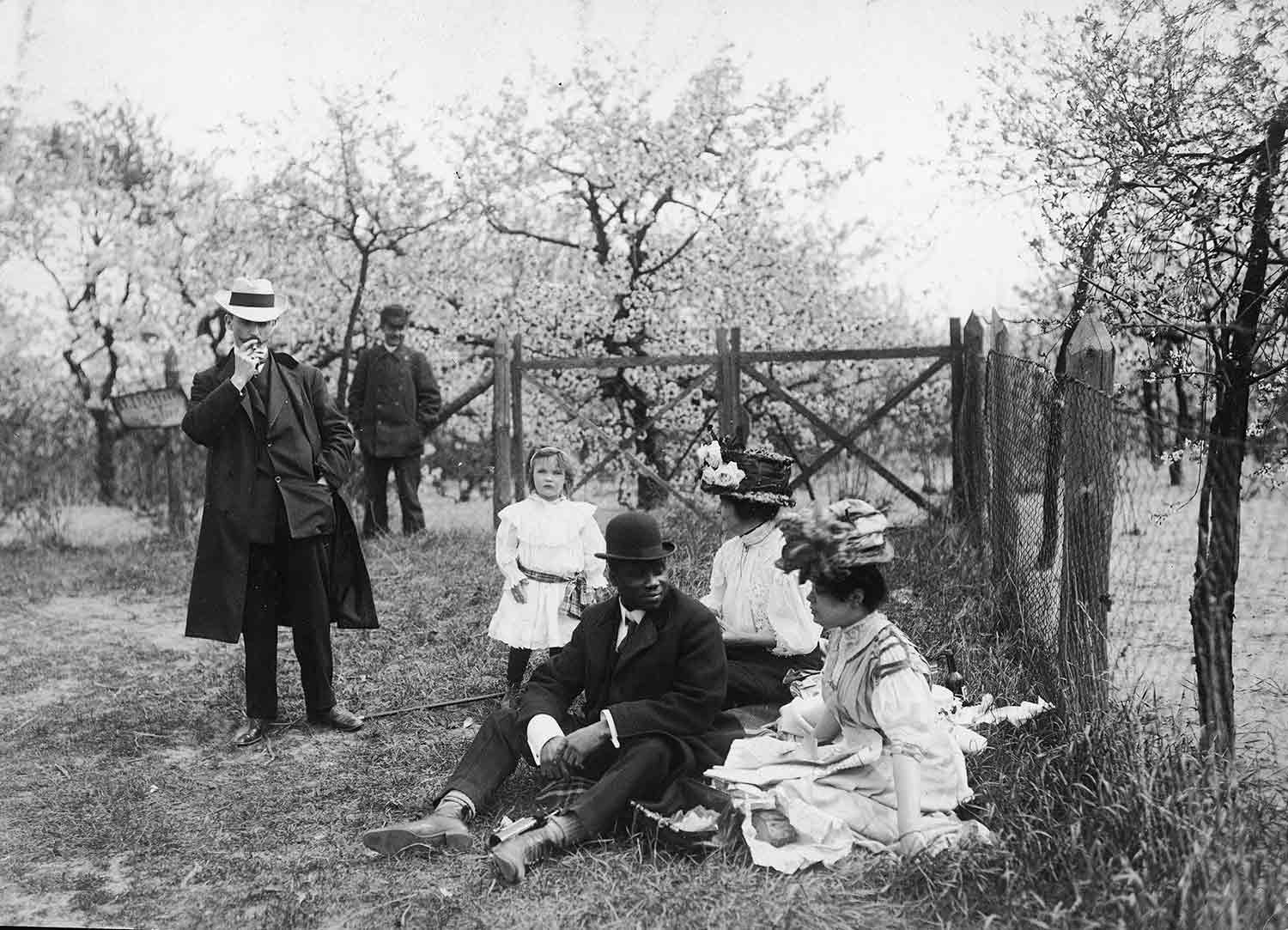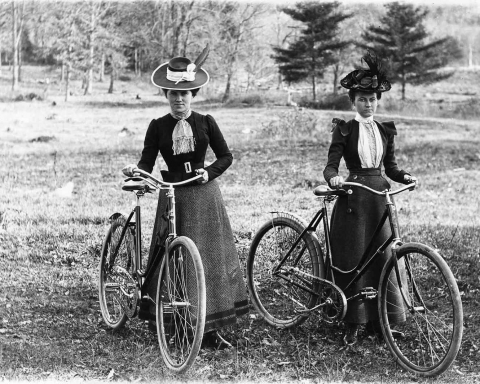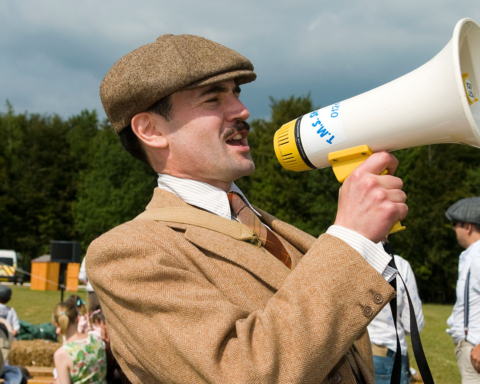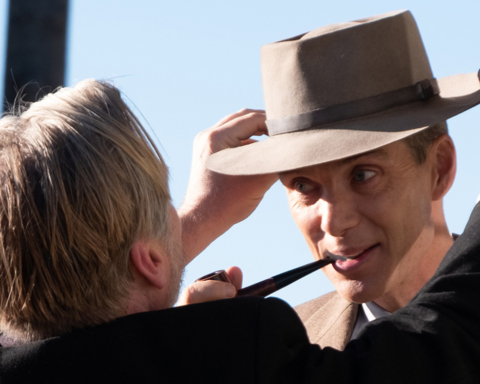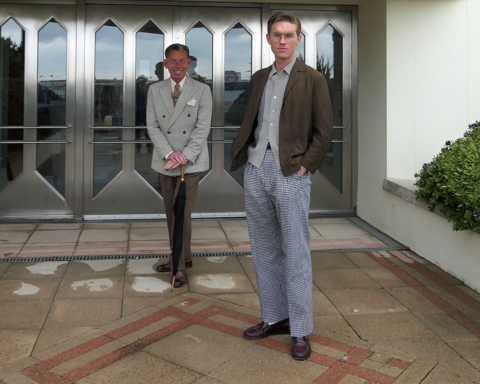Nathaniel Adams:
On April 23, 1916, five thousand spectators witnessed a bizarre match-up in Barcelona’s Monumental Bullring: the Anglo-French poet Arthur Cravan, nephew of Oscar Wilde, squared off against former World Heavyweight Champion Jack Johnson. They were two eccentrics, dandies of different stripes, prepared to pummel each other. Cravan had set up and advertised the fight himself, hoping to raise enough cash to get him to America before the French government caught up with him and stuck him in a trench with a rifle and a helmet. For Johnson, unable to return to America for fear of being arrested, this was an easy prize purse with which to support his life in exile.
Cravan was one of the original legends of Dadaism, a man who lived by his estimable wits and spent most of his energy kicking up swirls of controversy. When he was a boy he was expelled from school for spanking one of his teachers.
Cravan, like his uncle Oscar, was a big man, but only when compared with other French poets, and Johnson, whom the British had recently dubiously honored by nicknaming the German’s big black 150mm artillery shell after him, easily knocked Cravan out after toying with him for six rounds. The result was probably helped by the fact that Cravan entered the ring reeling drunk before Johnson had landed his first blow. The paying fans were suspicious of the honesty of so quick a match, after having been promised a great event (mainly by Cravan, who, again like uncle Oscar, was a master of self-promotion) that the local papers called the event “The Great Swindle” the next day.

Cravan was one of the original legends of Dadaism, a man who lived by his estimable wits and spent most of his energy kicking up swirls of controversy. When he was a boy he was expelled from school for spanking one of his teachers. He booked passage to America, where he travelled by boxcar from coast to coast earning a living as, among other things, a lumberjack. He educated himself in the classics along the way, and upon his return to Europe he lectured on art in Paris’s burgeoning modern scene (although his lectures more often than not involved him insulting the audience and hurling in mid-sentence his full, heavy briefcase at unsuspecting attendees.)
Cravan’s journal Maintenant, which lasted for five issues, was written entirely by him under various pseudonyms and seems to have been used chiefly as a means of getting himself in trouble. In 1913 he published the article Oscar Wilde Lives!, describing a surprise visit to his apartment from his late uncle. The piece caused an embarrassing sensation among the credulous; the New York Times even sent a special correspondent to Paris. Cravan told reporters that Wilde now wore a long beard, was bald with a few wisps of white hair and had an impressive tan. He claimed that Wilde was living in India or Indo-China and that if the French government would exhume Wilde’s coffin they would find a glass jar containing manuscripts of the author’s final comedy and tragedy.
In 1914 Cravan published a savage review of the Independents Exhibition of paintings in Paris, insulting every artist, critic and spectator in the country and asserting that “it is almost certain that no more than two intelligent people will attend the Salon.” He pulled no punches and changed no names, resulting in a mob of about a dozen of his targets waiting for him outside the gallery where he was selling his magazine. The ensuing brawl landed Cravan in jail for the night, and it was only through some deft excuse-making that he managed to avoid a duel with the poet Guilliame Apollinaire, whose girlfriend Marie Laurencin he had insulted in his review, admittedly without even seeing her painting: “Now there’s one who needs to have her skirts lifted up and to get a sound ____ some place, to teach her that art isn’t a little pose in front of the mirror.”
Jack Johnson was no less a stranger to controversy, and he seemed to court scandal as skillfully as he boxed. Like Cravan, he ran away from home when as a boy, stowing away on a steamer from Galveston, Texas to New York, where he was determined to shake the hand of world-famous con-artist Steve Brodie, the man who supposedly jumped of the Brooklyn Bridge and lived. As the ship pulled into harbour, Johnson announced to his fellow passengers that he was a poor black boy with no money and no reason to live and that he was going to throw himself overboard. His bluff was rewarded with a shower of sympathetic coins.
The giant Johnson stepped into the ring at the age of 16, winning small purses in “Battles Royal,” vicious and humiliating events in which seven or eight black men were blindfolded and forced to fight in a pit, the last man standing winning whatever the white spectators felt like chucking at him. Johnson’s prowess didn’t go unnoticed, and he was soon fighting in licensed bouts with both black and white opponents, refining his elegant technique and making a name for himself. Soon every fight fan in America had heard of Johnson and his inimitable style, in which he swiftly ducked blows, danced around the ring and used his opponents’ missteps to land devastating counter-punches. The color of his skin, and the very clear fact that he went comparatively easy on his black opponents while battering holy hell out of the white ones, led commentators to call his pugilistic methods sneaky and cowardly, whereas when the former Heavyweight Champion, “Gentleman” Jim Corbett used the same techniques, he was declared scientific and skillful.
Johnson gave $100 to the officer for a $50 fine; he told the officer not to worry about change, because he’d be speeding on his way back, too.
Johnson wanted a shot at the Heavyweight title, but the current champion Tommy Burns refused to defend it against a Negro. So Johnson, his manager and his entourage, which was beginning to include several white women, literally followed Burns around the world, and Johnson taunted and challenged Burns in every town he fought. In a stunning display of hypocrisy, Burns continually called Johnson a coward, saying “all coons are yellow.” King Edward VII chimed in and called Burns a “mere bluffer.” Finally, Burns agreed to fight for a massive sum of money and the two met in Australia on Boxing day, 1906, with fans around the world waiting at telegraph stations to hear the result. It was a bloodbath. Burns barely landed a punch as Johnson pounded him like veal, grinning for the cameras the whole time. When Burns staggered and looked like he was about to fall, Johnson would hold him up in order to pummel him some more, and say things like “Don’t you know how to fight, Tommy? They said you were a champion. [Burns’ wife] Jewel won’t know you when you get home, will she? Who told you I was yellow? You’re white, Tommy: white as the flag of surrender.” The fight had to be stopped by the police.

Jack Johnson was now the first black World Heavyweight Champion. He had everything but modesty: he wore patterned bow ties with a wing collar, bespoke suits in large windowpane checks, coats with wide fur lapels, a diamond stick pin, pearl shirt studs and rings the size of plums. He carried an ivory-handled cane and always wore a jaunty hat, either pork pie, boater or trilby. His white girlfriends would be dressed to match in sable and mink. He drove sports cars at top speed, once causing a white police officer to fine him 50 dollars. Johnson peeled a hundred from a wad, and gave it to the officer, who stammered that he didn’t have change. Johnson told him not to worry about the change, because he’d be speeding on his way back, too.
People clamoured for the former undefeated Heavyweight Champion Jim Jeffries to come out of retirement and wipe the smile off Johnson’s face, and finally public opinion and the promise of a fortune brought Jeffries off of his Alfalfa farm and back into the ring. Johnson wiped the mat with him on July 4th, 1910, and the next day race riots erupted across America.
White America finally had its revenge when Johnson was arrested on Federal “white slave” trafficking charges for taking a white prostitute across state lines. He was sentenced to a year and a half in prison, but Johnson jumped bail and fled to Europe, where he spent the next several years fighting the likes of Cravan for cash, but not before losing his title in Cuba in 1915.
After the Barcelona fight, Cravan finally had enough money to sail to America, sharing an ocean liner with fellow exile Leon Trotsky, who said that Cravan explained his version of conscientious objection to him on board when he “frankly confessed he loved better to smash the jaws of messieurs Yankees in the noble sport than get stabbed in the ribs by a German.”
Marcel Duchamp, then living in New York, was excited by Cravan’s arrival in the city and invited him to speak at the American Independents Exhibition. Cravan arrived late and thoroughly sozzled. The sophisticated audience included the cream of New York Society. He strode to the podium and pulled off his jacket, then his waistcoat, the audience entranced and held in suspense by the massive broad-shouldered poet. He still hadn’t spoken a word. The crowd grew increasingly nervous as Cravan proceeded to remove his collar, tie a handkerchief around his neck, and let his silk braces fall off his shoulders. His trousers dropped. Then, according to the New York Sun’s correspondent, he “emitted a whoop which drowned out the rattle and roar of the New York Central’s trains in the yards behind the building. Art was stricken and fled with many screams down the stairs.” As “Art” ran away from the scene, the police rushed in and Cravan, cursing at the top of his lungs, was hauled off to jail. Duchamp, whose famous urinal was in the exhibition, declared the lecture a great success.
When America entered the war and the prospect of conscription again appeared to Cravan, he fled to Canada, using the identity papers of a friend who had died of a massive hemorrhage during a night out drinking with him. Eventually, he escaped to Mexico with the poet Mina Loy, whom he married. There he set up a boxing school, got beaten badly again by the local champion and made arrangements to move to Argentina. Only one of them could afford commercial passage, so the pregnant Loy went to Buenos Aires and he was to meet her there soon afterward. But Arthur Cravan, sailing from Mexico in a tiny boat, never arrived, nor was any body ever found.
However, the story doesn’t quite end there. Some believe that Cravan, operating pseudonymously as either B. Holland, Dorian Hope or Sebastian Hope was the man behind a string of Wilde forgeries in the 1920s. The forged manuscripts and letters were of exceedingly high quality, and they were declared genuine by several experts. One potential buyer arranged to meet “Dorian Hope,” and found a man “dressed like a Russian count with a magnificent fur-lined overcoat.” Years later, in 1957, a man named Herbert Boyce Satcher, recalled meeting a “vagrant poet…rather derelict, with a velour hat down close to his eyes” in New York in 1919 who gave him an engraved business card bearing the name “Mr. Dorian Hope.” Satcher received several letters from “Hope,” the last one from England just months before the Wilde forgeries appeared in France. The identity of the forger Hope remains unknown to this day.
Jack Johnson, who happened to also be living in Mexico at the time of Cravan’s disappearance, was tired of living in exile and turned himself in at the Texas border in 1920. He served out his prison sentence and then continued to box in exhibition matches, never approaching his former glory. In 1946, after a segregated restaurant refused to serve him, an angry Johnson pushed one of his sports cars over the limit, crashed, and died.

